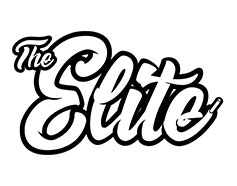
Last week, Twitter attempted to pull everyone who isn’t paying for Twitter Blue’s verified check mark, including celebrities and public figures (aka the people we still use Twitter to keep up with).
There were always rumors Twitter and Instagram would eventually sell the coveted blue check mark anointed to public figures, but it was unclear what the value of purchasing one was. The fact that a blue check mark wasn’t for sale almost made them more appealing, noting your page held an elevated voice.
Twitter Blue is a subscription that sells blue check marks for profiles and gives access to new features like editing tweets and identity verification. The AP reports that estimated first-month sales for Twitter Blue subscriptions clocked in at around 300,000. Musk’s bet of increasing subscriptions via “the de-verification” backfired horribly, as celebrities not only refused to pay but also began publicly denouncing the return of their blue check marks in droves when Twitter quietly conceded on its plans, returning verification for accounts with over 1 million followers.
While Twitter is still useful for celebrities to connect with their audience, Twitter Blue did little to enhance that experience. The authentic following these influencers amassed is enough authority for newcomers to pass the eyeball test (aka ratio), which didn’t warrant the extra $8-11/month for a blue check mark.
The blue check mark is becoming a digital relic of web2, once defined as a special status amongst the ‘freemium’ services. Web2 consists of social media platforms that are free to use, with content creation and engagement highly encouraged to keep users looped in. A big reason there were previous rumors of paying for Twitter or Instagram in some capacity is that the vast majority of users didn’t understand how personal data or advertising made enough money for the platforms, but it didn’t matter. Keeping these platforms free felt like a public service, which is why the blue check mark was so important: it represented a noteworthy voice amongst a crowd of millions.
Verified accounts are now prioritized
— Elon Musk (@elonmusk) April 25, 2023
Around 2017, web3 started in response to what many creators hated about web2. Their work had been devalued to a free medium they felt pressured to advertise on in hopes they end up with enough followers to earn a blue check mark bestowed by web2’s centralized authorities. Defined by ownership, identity, and decentralization, web3 consists of creators minting their work as NFTs on the blockchain, which asks fans to expand their support beyond likes, comments, and shares of web2, graduating to digital patrons that can unlock IRL and online benefits curated by rarity. It also gives these patrons the freedom to resell the digital works/access while tethering royalties back to the original creator automatically.
Although Twitter Blue is not an NFT, blue check marks are marketed as web3-adjacent: representing a sense of digital status that comes with special privileges (albeit, the blue check mark isn’t a digital asset since it can’t be bought or sold on a digital ledger).
In web2’s prime, the platforms were a place where any regular person could reach out for free to their favorite actor, athlete, or influencer and they’ll likely read it, possibly even respond back. This took a backseat when social marketing made total reach the key metric for success, making those one-on-one interactions less frequent (unless intentional to cause virality). Web2 became a platform for attracting the biggest audience possible, which left an opportunity for web3 to fulfill the personable aspects superfans still craved.
Between 2021-2022, many people jumped to web3 for that same personal access lost in web2, only paid at a premium. Though it wasn’t a guarantee, your chances of meeting noteworthy figures increase if you believed in the right web3 project early or were willing to pay high prices. Projects like CryptoPunks currently hover around 50 ETH ($97,181.50), which includes collectors Jay-Z, Alexandre Arnault, and Serena Williams. Meanwhile, the recent KITH collaborator Invisible Friends floor price hovers around 1.4 ETH ($2,721), while Doodles, the project co-led by Pharrell, is at 2.3 ETH ($4,471).
Access isn’t cheap once the influential onboard, which became a primary driver of the second web3 craze. Early adopters realized that famous people were buying in because they were doing what famous people do best: gate-off their likeness, access, and time. The CryptoPunk PFP (profile picture) just became a proverbial calling card on where to potentially get the chance to reach them.
Most influencers will still use web2 as a public forum and web3 as a private community for fans and high-value peers. This is why many popular projects from creators and brands are more focused on onboarding users rather than hyping up markets, they want people to use products like PFPs on web2 while also learning about the rewards of digital access on web3. Who cares if you have a blue check mark when your PFP can get you products early or access exclusive events?
Musk may have called Twitter’s use of NFT profile pictures “annoying,” but having a blue chip PFP holds much more value than a blue check mark. On both Twitter and Instagram, the allure of the once-elusive digital title has lost its luster, making users often question if the verified mark was bought or earned. None of us can say we’re completely shocked by these platforms repackaging and selling blue check marks as subscriptions 10+ years in, especially since the verified mark has become so ubiquitous.
The attention economy is defined by influencers and brands. If the blue check mark was the beacon of influence for web2, digital access has become the new signal for web3.



